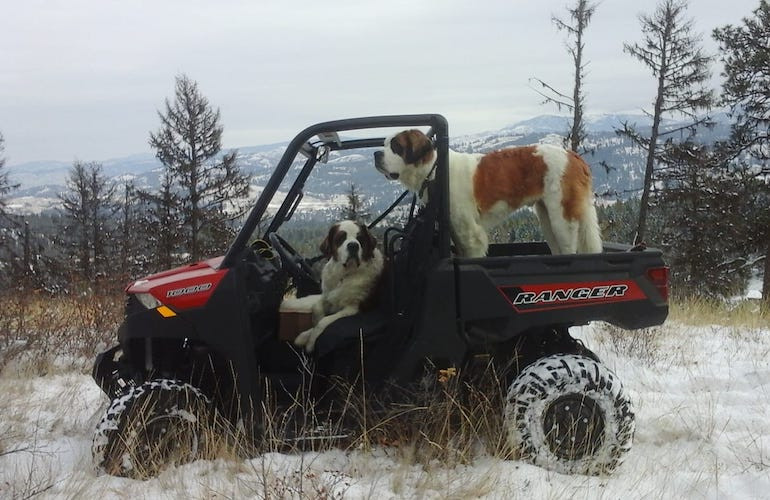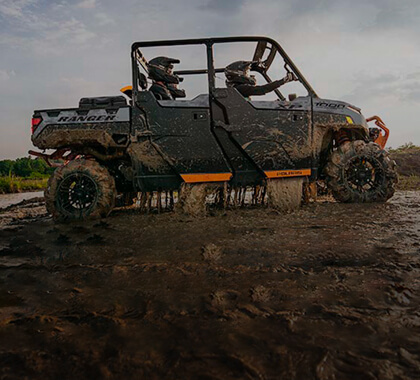10 Most Common Questions About The Polaris Ranger
Apr 16th 2023
Question 1: What Does A Polaris Ranger Weigh?
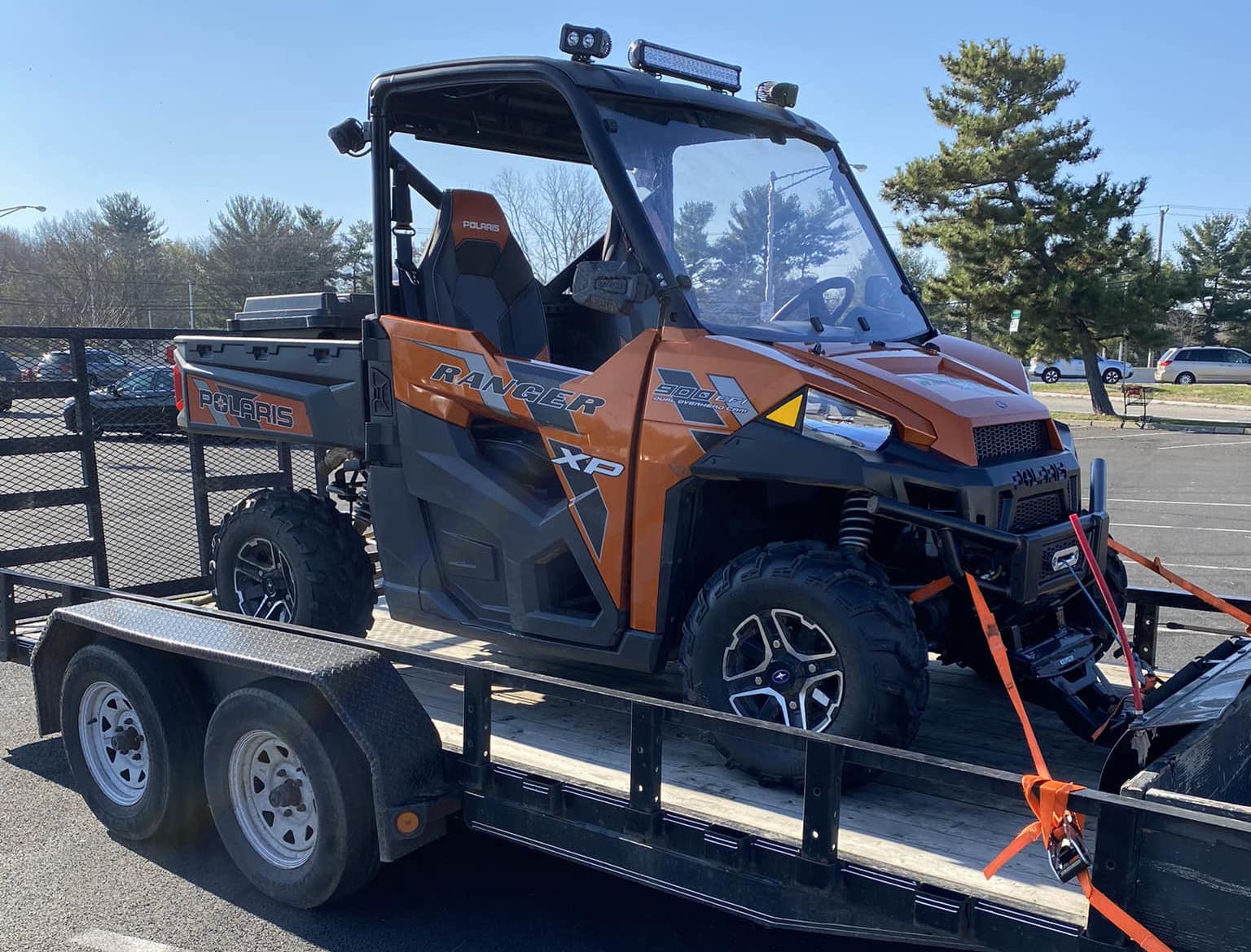
Answer 1: The dry weight of a Polaris Ranger UTV ranges from 1,065 Lbs to 2,336 Lbs depending on the model. Here are the weights of each particular Polaris Ranger trim package from lightest to heaviest:
- Polaris Ranger 500 - 1,065 Lbs
- Polaris Ranger 570 Full-Size - 1,070 Lbs
- Polaris Ranger 570 - 1,073 Lbs
- Polaris Ranger Crew 570 - 1,326 Lbs
- Polaris Ranger Crew 570 Premium - 1,392 Lbs
- Polaris Ranger 1000 - 1,429 Lbs
- Polaris Ranger XP 1000 - 1,565 Lbs
- Polaris Ranger Crew 1000 - 1,626 Lbs
- Polaris Ranger XP 1000 Texas Edition - 1,670 Lbs
- Polaris Ranger EV - 1,762 Lbs
- Polaris Ranger XP 1000 High Lifter Edition - 1,773 Lbs
- Polaris Ranger XP 1000 NorthStar Edition - 1,899 Lbs
- Polaris Ranger Crew XP 1000 - 1,936 Lbs
- Polaris Ranger Crew XP 1000 NorthStar Edition - 2,337 Lbs
Question 2: Where is the battery in a Polaris Ranger?
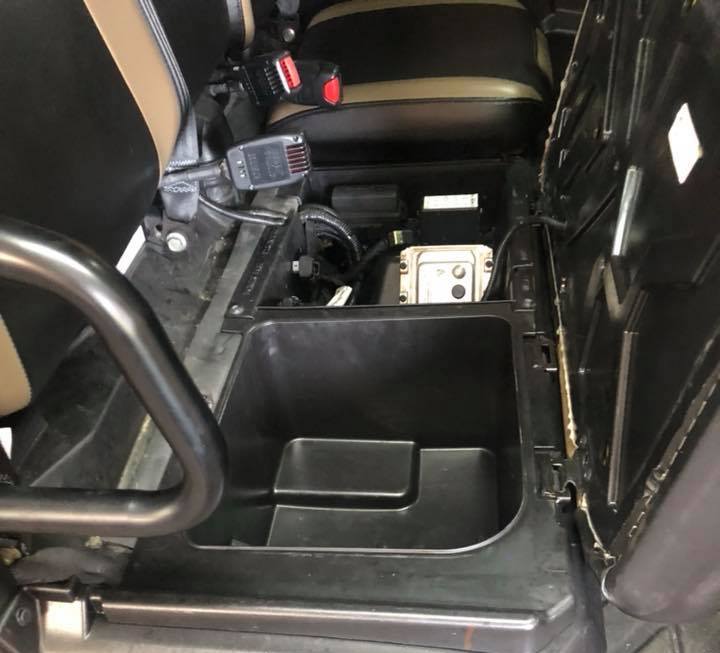
Answer 2: The Polaris Ranger battery location varies, but on most model years and trims, the battery is located under the seat, and it can be accessed or changed only after removing the seat.
Batteries on Polaris Ranger Crew models are located under the rear seat, and on the Polaris Ranger 1000, Polaris Ranger XP 900, and Polaris Ranger XP 1000 models, the under-seat battery can be accessed or changed by removing both the right rear seat as well as the storage bin underneath.
The battery on 2016 to 2019 Polaris Ranger 570 Full-Size models is located under the driver’s seat, while the batteries for the 2020+ Polaris Ranger 570 Full-Size, 2015-2018 Polaris Ranger Diesel, 2010-2013 Polaris Ranger 6x6, 2010-2013 Polaris Ranger 800 and Polaris Ranger Crew 800, Series 99 Ranger, and all Ranger years from 2005-2009 are located underneath the hood.
The battery on Series 11 Polaris Ranger machines is located under the rear left fender, and on all Polaris Ranger HIPPO models, the battery can be found under the HIPPO unit.
Question 3: What is the top speed of a Polaris Ranger 1000?
Answer 3: The top speed of an unaltered Polaris Ranger 1000 is around 55-58 MPH.
Question 4: When should I change the oil in my Polaris Ranger?
Answer 4: After doing the initial oil change and oil filter change after the break-in period – which is either at 25 hours or one month of use, whichever comes first – you should change your Polaris Ranger oil and oil filter every six months, every 1,000 miles, or every 100 hours – whichever comes first.
You’ll want to check your oil more frequently (and change it when needed) if you ride your machine hard at high RPMs, if you ride frequently in mud, water or sand, if you encounter a lot of dust when riding, if you haul heavy loads, or if you use the UTV off and on frequently in cold environments.
Question 5: What type of oil do you use in a Polaris Ranger?
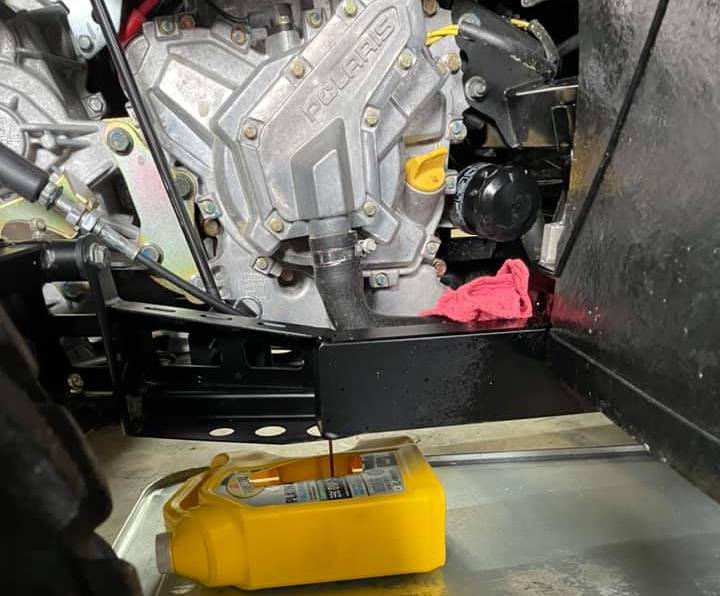
Answer 5: For the engine, the owner’s manual suggests using two and a half quarts of PS-4 Full Synthetic 5W-50 oil.
Question 6: Where is the VIN number on a Polaris Ranger?
Answer 6: On most Ranger models (especially model years 2015 and above), the 17-digit Vehicle Identification Number (VIN) is stamped on the frame at the rear of the vehicle on the left side above the wheel well. There are a few exceptions, however, so you can also check the front left wheel well, the frame rail under the left side cover of the center console, or the frame below the left rear passenger seat in front of the left rear tire. If all else fails, you can find an engine serial number on the motor, then cross-reference that with Polaris to get your side-by-side's VIN.
Question 7: Why does my Polaris Ranger not start?
Answer 7: There are many potential reasons why a Polaris Ranger won’t start, the most common of which are:
- A dead battery (fully charge and load test your battery).
- Old or no fuel / waterlogged fuel (use 87 octane instead of 91, as well as fuel with no ethanol).
- Low compression (a leak somewhere in the piston, piston ring, camshaft, head gasket or valves) or a bad fuel pump.
- A chafed wire harness or exposed wires / bad ground.
- Bad spark plugs.
- Low oil.
- Injectors not firing.
- Bad crank position sensor.
- Valves are too tight.
- Band O2 sensor.
Question 8: What is the difference between a Polaris Ranger and a Polaris General?
Answer 8: Where the Polaris Ranger is designed more for work, and the Polaris RZR is designed more for play, the Polaris General is made to be a mix of both. As far as size goes, the Polaris General 1000 is smaller than the Polaris Ranger 1000, with a bed box that is shorter and narrower as well as less leg room in the cab.
In terms of power, the Polaris General 1000 has 100 horsepower, whereas the Polaris Ranger 1000 has 82 horsepower. With a Gilomen tune or programmable ECU tuner, however, you can make the power output of a Ranger on par with that of a General.
The last major difference between the Ranger and the General is comfort. The suspension on the General is worlds better, and the bucket seats / seating position in the General (compared to the bench seats in the Ranger) are also more plush and more comfortable for extended riding times. If you want to ride trails hard and fast, the Polaris General is an excellent choice. But if you want a work rig, the Ranger is better suited for that type of use.
Question 9: What is the bolt pattern on a Polaris Ranger?
Answer 9: The bolt pattern on a Polaris Ranger is 4/156.
Question 10: When should I change the belt on my Polaris Ranger?
Answer 10: If you ride conservatively, you may not have to replace your belt for a few thousand miles. But the longer you wait to replace your belt, the more likely it is that it’ll break while you’re out in the field. As such, best practices state that you should change your Polaris Ranger belt every 6 months, 50 hours, or 1,000 miles – whichever comes first. Alternatively, you can also get a spare belt and the requisite belt-changing tools, and keep it all in your machine whenever you ride to be able to change the belt if it ever breaks on the trail.


